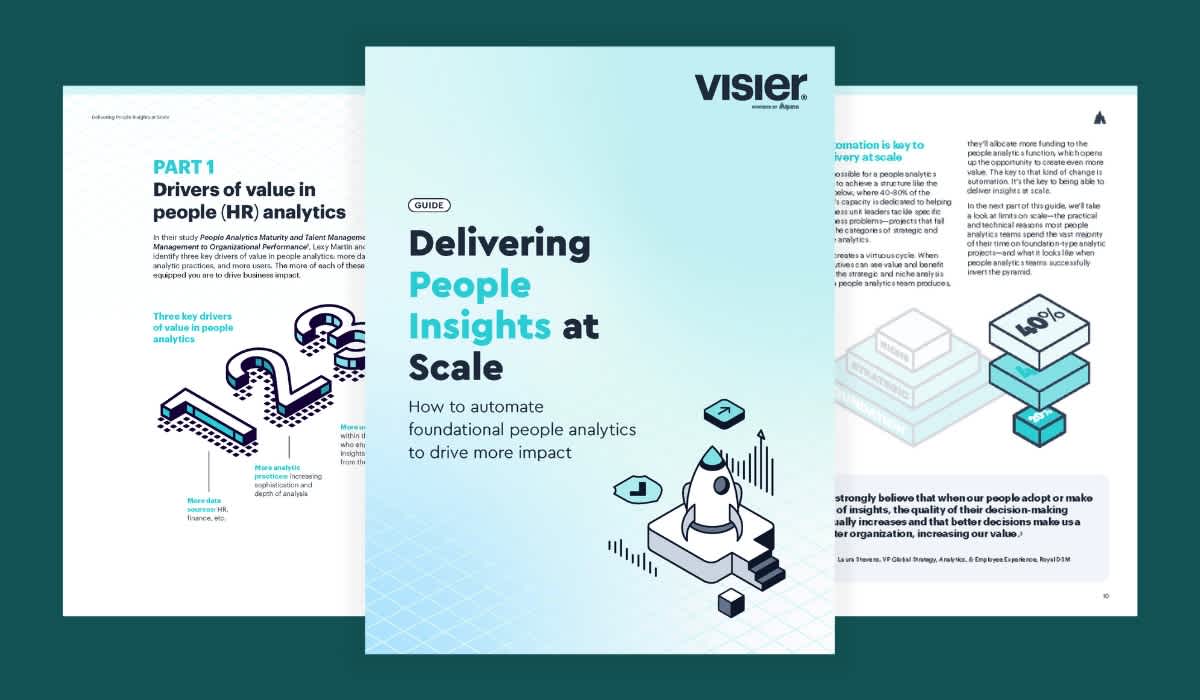How CSRD Sparked a Strategic Shift in People Data Management at Bertelsmann
Discover how the CSRD reporting mandate helped Bertelsmann unify people data management, improving compliance, accuracy, and strategic workforce insights. Read more.

The emergence of the European Union's (EU's) Corporate Sustainability Reporting Directive (CSRD) has placed people's data at the center of corporate compliance and transparency efforts. Organizations across the globe with operations in the EU are ushering to ensure that they comply with the new requirements. Subsequently, this has led to a significant shift in the way companies manage their people data.
Speaking to Marc Amedick, manager of global analytics and reporting at Bertelsmann, the international media, services, and education company, CSRD was a catalyst for change—a critical stepping stone to deeper insights and value creation across the organization's people data management strategy.
"Before, there was no global initiative to unify people data, but CSRD forced us to find a comprehensive solution that could ensure data quality and meet stringent regulatory demands."
Marc Amedick, Manager of Global Analytics and Reporting, Bertelsmann
Efficiency and accuracy in compliance
With the deadline for CSRD reporting looming, Bertelsmann turned to Visier to streamline the data collection process, reduce manual effort, and focus on the strategic use of workforce data.
"Visier's prebuilt CSRD metrics meant we didn't have to spend months building the model ourselves. We could focus on understanding the data and ensuring accuracy," shared Marc. "The system was already aligned with the definitions required by the EU, so we could focus on the KPIs that were most relevant to our business," he added.

As Bertelsmann is a large organization with multiple brands worldwide, the ability to consolidate all of the data into one platform is a significant advantage. It means that Bertelsmann's decentralized divisions can comply with the regulations without overburdening local HR teams.
Plus, with Visier's permissions-based access system, each division can only see and access the data relevant to them, ensuring data privacy and security without the need for extensive manual work.
Unifying a decentralized organization
While CSRD was the catalyst for adopting Visier, Bertelsmann quickly experienced benefits beyond regulatory compliance. CSRD has been the push to centralize and standardize people data management across the organization’s diverse group of businesses.
With over 80,000 employees spread across 50 countries and multiple brands, consolidating data in a unified way was not easy, to say the least. As Marc shares,
"Before Visier, we had multiple systems and localized databases. While this decentralized approach made sense for each business, it didn't give us the global insight we needed, especially under CSRD. Visier has helped us standardize our data globally, which is key for accurate reporting and analysis."
With operations in education, logistics, and media, the organization had a complex web of hundreds of different HR systems. Each division had its own needs and processes, further complicating the task of centralizing data management.
"It's not the way we can standardize every data field, as different businesses have different requirements, but Visier has helped create a common data foundation to standardize certain fields while still allowing for local customizations," Marc noted.
"This balancing act was critical: too much standardisation could risk neglecting the unique needs of local entities, while too much flexibility could undermine the ability to aggregate and analyse data at the group level."
Utilizing Visier's built-in data dictionaries and regulatory frameworks enabled Bertelsmann to navigate this complexity. The organization was able to roll out uniform guidelines, establish a global data format, and still account for localized needs—whether it was payroll or safety incidents, which were all unique to each division.
Scaling across the organization
In parallel with the launch of the CSRD initiative, Bertelsmann began a pilot across three divisions to test the unified data management approach. With the first official CSRD reporting due in early 2025 for the 2024 reporting period, the pilot was designed to validate manuals, ensure the unified data model was robust, and prepare the organization for CSRD compliance while simultaneously exploring business insights.
The results were overwhelmingly positive. During the pilot, the company discovered critical insights regarding turnover rates—they found a 10% increase in turnover for one division.

Typically, digging into the data to identify the root cause of the turnover would be challenging to uncover without a centralised data management system. With Visier's intuitive filters and advanced analytics capabilities, Bertelsmann was able to isolate the issue and reassure the business that voluntary turnover was actually decreasing. Instead, they discovered that this turnover increase was due to an external business factor—the sale of a small division in one country—reassuring them that their local initiatives were indeed working.
"We thought turnover was rising, but after filtering out external factors, we found that the voluntary turnover had actually decreased, thanks to successful local initiatives," Marc says. "That's the power of analytics—moving from assumptions to facts."
What was also interesting was that due to that pilot phase, the team discovered significant data gaps that had previously been overlooked due to the decentralized nature of their HR systems.
"The pilot revealed a lot of data gaps because local systems were often focused on payroll or performance history, rather than a holistic view of the employee," Marc said. "For the first time, we had the ability to visualize and investigate our entire workforce data, and that was eye-opening."
As a result, this led to process improvements in consistent reporting across its divisions, standardizing data entry and definitions, and identifying potential data quality issues before they impact decision-making.
Due to the successes of the pilot, Bertelsmann is now on a mission to scale Visier across the whole business and unlock the full potential of their workforce data, a decision that fills the team with a sense of accomplishment and anticipation for the future.
A future of possibilities
As Bertelsmann continues to expand its use of Visier across more divisions, the company is already looking ahead to how people data can drive broader business outcomes. The ability to standardize, visualize, and analyze workforce data at a global scale will equip them with actionable insights to identify trends and patterns that were previously impossible to see.
Looking ahead, Marc sees people analytics playing an even greater role in talent management, diversity initiatives, and organizational development. With the need to comply with upcoming regulations like the EU's Pay Transparency Directive, the need for robust, reliable people data will only increase. However, now, with a unified data management system in place, Bertelsmann will be well prepared.
The most exciting part is that Bertelsmann's journey with Visier is far from over. What began as a response to regulatory pressure has evolved into a strategic initiative that is transforming how the company understands and manages its workforce.
"As our business and usage of Visier continues to evolve, I can't wait to see what insights we uncover when we have the full picture," Marc concluded.
We look forward to hearing about Bertelsmann's continued success with Visier and how they continue to leverage people analytics to drive business results.



